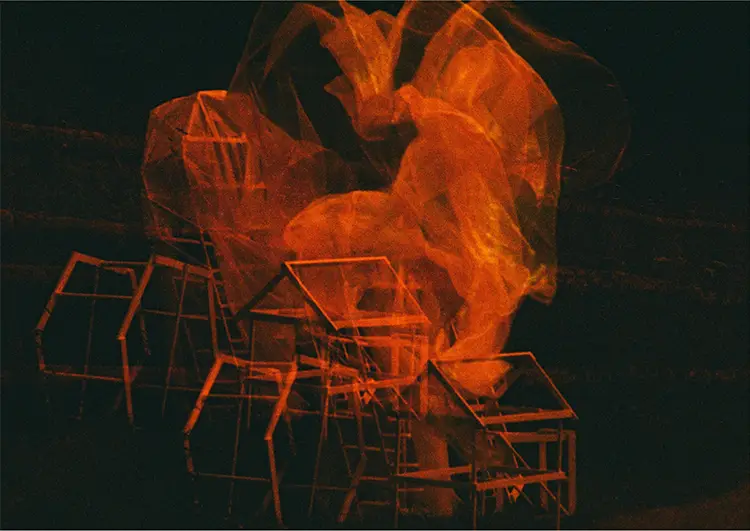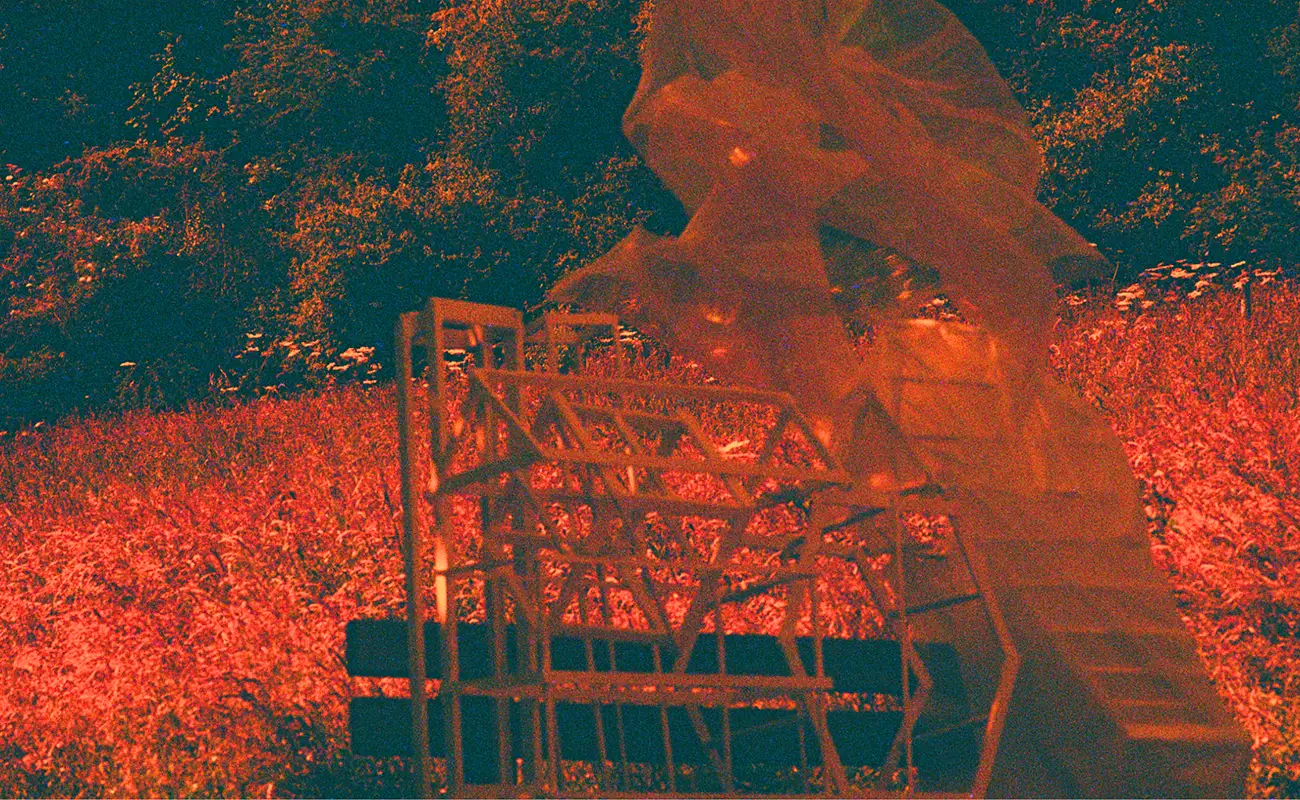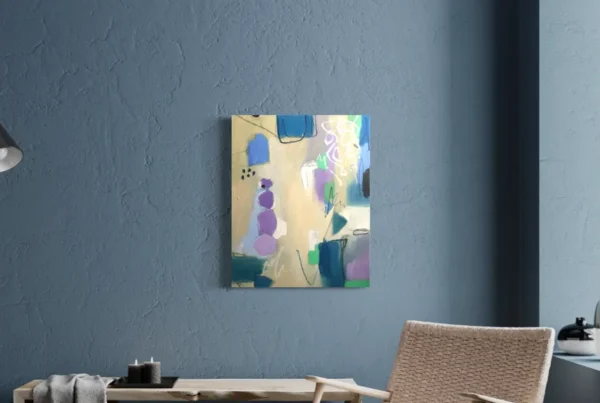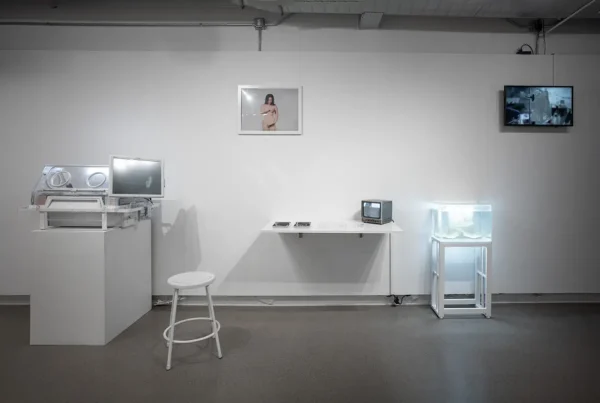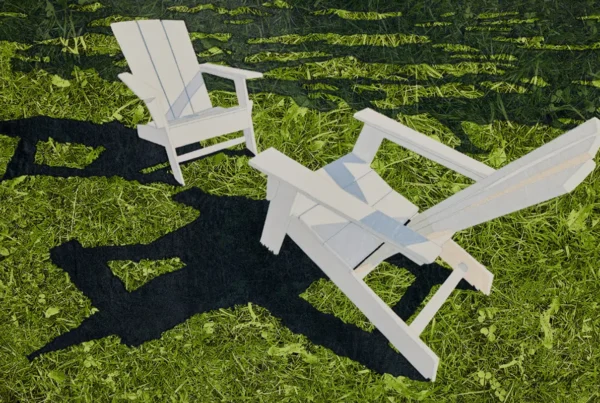“Grief is a continuous life experience—memories are like architecture: we use pieces to construct and deconstruct, and these change through time.”
The Architecture of Emotion
Brogan Burke’s creative practice stands as an evocative investigation into how physical environments echo and reshape the emotional landscape of grief. Working across sculpture, installation, and film photography, she uses found materials to construct site-specific pieces that engage deeply with memory, place, and the psychological weight of architectural forms. Her work doesn’t just occupy space—it interrogates it, asking how the built world around us interacts with intangible experiences of mourning, transformation, and personal reflection. With academic roots grounded in an MA and BA in Fine Art from Wrexham University, Burke’s vision is both conceptually rigorous and profoundly intimate.
Burke’s artistic trajectory was set in motion not by a singular event, but by a compulsion to create—specifically, to give form to emotion through the physical act of making. As a child, she gathered discarded materials, crafting small-scale sculptures and collages that were less about aesthetics and more about sense-making. These early works acted as anchors during moments of internal turbulence. Later in life, after being diagnosed as autistic, she came to understand her creative impulses not simply as artistic choices but as essential methods of communication and processing. This insight propelled her into formal art education and ultimately led to the development of a practice that seeks to make the invisible emotional states surrounding grief visible and inhabitable.
The loss of her mother in 2019 marked a pivotal point in Burke’s artistic evolution. Confronted with the sudden shift in her personal reality, she turned to art not only as expression but as a form of survival. What began as an attempt to articulate the rawness of loss became a lifelong inquiry into grief’s shifting nature. Burke sees memory as architectural—constructed from fragments, susceptible to erosion, and subject to reconstruction over time. This concept now anchors much of her work: grief is not a phase but a continuous process, and through her sculptures and installations, she gives it form, allowing audiences to encounter and reflect upon its complexity within shared physical spaces.
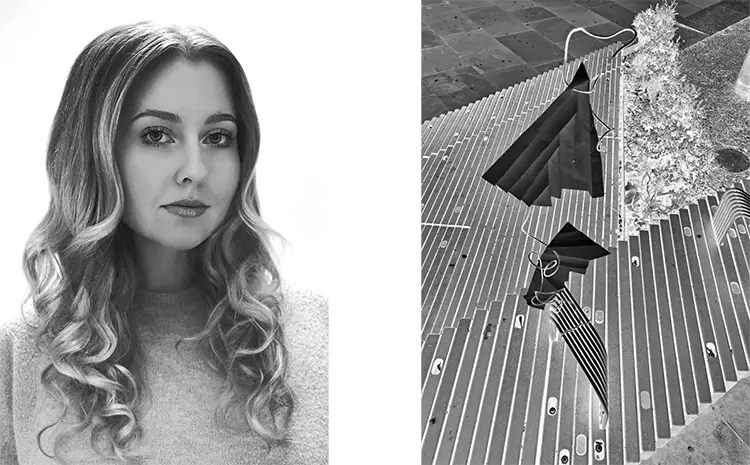
Brogan Burke: Building With Absence
Central to Burke’s practice is her exploration of the intersection between emotional disorientation and spatial awareness. Her artworks often depict the “in-between” state of grief, where identity feels dislodged and perception becomes altered. This liminality—hovering between presence and absence—manifests not only in the themes she explores but in the very materials she selects. Found objects, fragments of previous lives and contexts, become the bones of her pieces, grounding ethereal concepts in tangible matter. These components are not chosen at random; they carry weight, both literal and symbolic, and serve as conduits for the emotional resonance Burke aims to evoke.
Her creative process is intimately linked to movement through space—physical, emotional, and psychological. Rather than confining herself to the traditional studio environment, she often brings her work outdoors, engaging with landscapes and urban environments where personal memories intersect with broader histories. For Burke, this act of placing art within living spaces allows her to question how grief exists outside of the individual and becomes part of collective experience. Whether revisiting places tied to her mother or discovering locations her mother once traveled to, Burke documents these moments through photography, sketches, and notes, each forming a vital part of her preparatory process.
The connection between architecture and grief in Burke’s work extends beyond metaphor. She draws parallels between how buildings are constructed, damaged, and rebuilt, and how emotional lives follow similar patterns. Like the structures she mimics or repurposes, memories can feel both sheltering and confining, enduring and fragile. This cyclical interplay of formation and erosion is what defines her installations. Rather than seeking resolution, Burke leans into the ongoing nature of loss, inviting audiences into environments that allow for individual reflection and shared understanding without forcing closure.
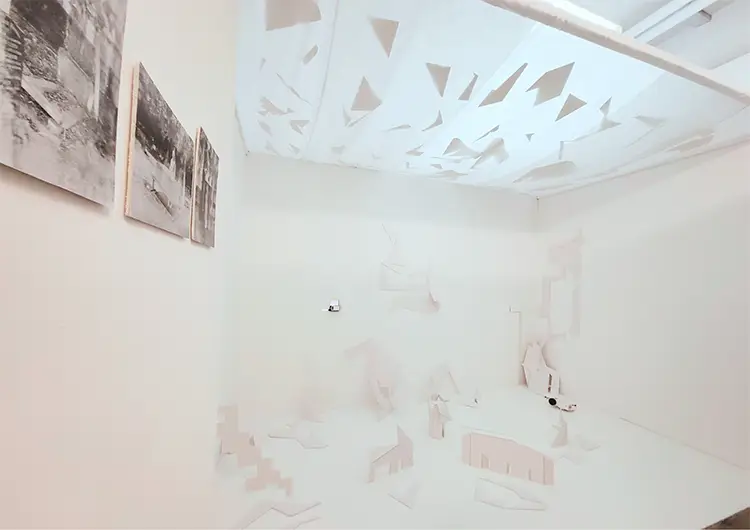
Navigating Creativity Through Memory and Material
Brogan Burke’s workspace is a carefully curated extension of her internal world. Far from a sterile studio, her environment includes inspirational artifacts such as mind maps, photographs from personal journeys, and hand-drawn diagrams. These are not passive decorations but living documents—records of her emotional and physical explorations through spaces connected to her mother. These mementos act as reference points that help her reconnect with memories that are continuously shifting. By revisiting these images and writings, Burke is able to trace how her own understanding of grief evolves over time, allowing her to layer that change into her work.
Even with such personal material at hand, Burke doesn’t rely solely on introspection. When ideas feel stagnant or overwhelming, she physically relocates her creative process, allowing the outside world to infuse new life into her concepts. Experimenting with different versions of a single idea across multiple environments helps her understand how the work interacts with varying contexts. This iterative approach mirrors the non-linear journey of grief itself—constantly reshaped by new experiences and altered perspectives. Her willingness to revise and expand upon old ideas underscores a deep commitment to both process and emotional truth.
The influence of other artists plays a significant role in shaping Burke’s visual and conceptual language. She credits Es Devlin for demonstrating how light, structure, and performance can converge to craft emotionally immersive spaces, and Francesca Woodman for revealing how photography can evoke absence and presence in haunting yet tender ways. These artists inform Burke’s commitment to creating work that dissolves rigid boundaries—between disciplines, between public and personal, between material and emotional. Through their guidance, she continues to build a practice that is equally architectural and intimate, where space becomes not just a container, but a co-author of meaning.
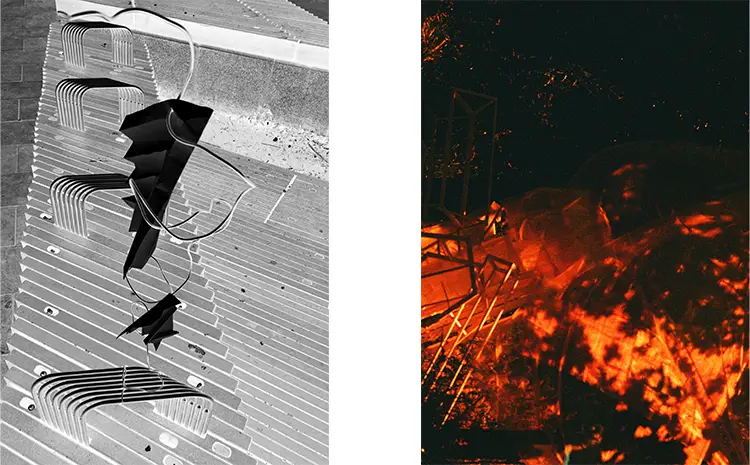
Brogan Burke: Envisioning Spaces of Shared Mourning
Looking toward the future, Burke is driven by a vision that extends beyond traditional gallery settings. She dreams of developing large-scale, interactive installations that invite visitors into a contemplative environment designed specifically for processing grief. These envisioned spaces are not meant to offer solutions but to allow for silence, vulnerability, and communal presence. The idea is to create a setting where people can move through sorrow at their own pace, without pressure or expectation. Such a space would act as both an artwork and a sanctuary—an open invitation to those who might otherwise struggle to articulate their loss.
Her sketchbooks are full of potential directions for this project—notes and images waiting to take shape. Even when certain ideas are not immediately realized, Burke sees them as seeds for future growth, always available to return to and expand. This reflects her broader philosophy on grief: that it doesn’t expire or resolve neatly, but lingers, evolves, and occasionally resurfaces in unexpected ways. Her installations, then, are not just static creations but parts of an ongoing dialogue, both with her audience and with her own inner experiences.
Burke’s ultimate goal is to shift the way society engages with grief—not as something hidden or isolated, but as a shared human condition deserving of recognition and space. By shaping environments that reflect this belief, she hopes to break down the stigmas surrounding emotional vulnerability. Her installations could serve as collective mirrors, inviting visitors to see their own experiences refracted through shared symbols, textures, and spatial relationships. In doing so, Burke positions her work as a bridge between personal mourning and collective healing—where art doesn’t just depict emotion, but makes space for it to exist fully.
